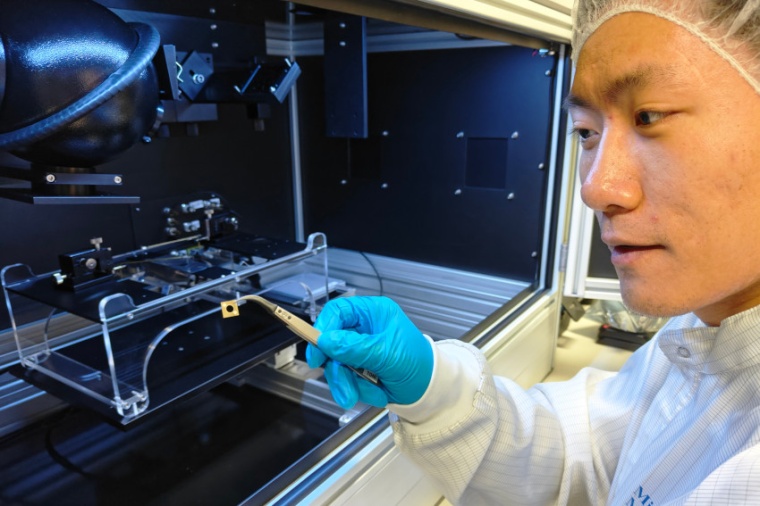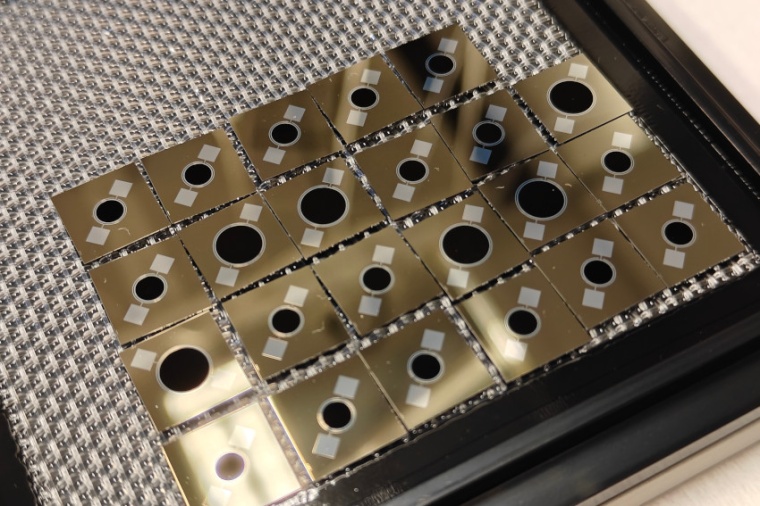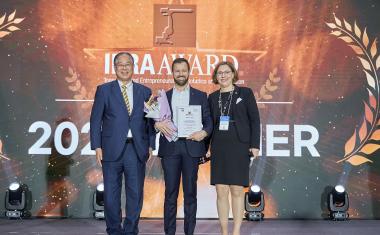Building better infrared sensors
Proof-of-concept device outperformed commercial indium gallium arsenide photodiodes in responsivity.
Detecting infrared light is critical in an enormous range of technologies, from remote controls to autofocus systems to self-driving cars and virtual reality headsets. That means there would be major benefits from improving the efficiency of infrared sensors, such as photodiodes. Researchers at Aalto University have developed a new type of infrared photodiode that is 35 % more responsive at 1.55 micrometers, the key wavelength for telecommunications, compared to other germanium-based components. Importantly, this new device can be manufactured using current production techniques, making it highly practical for adoption.


“It took us eight years from the idea to proof-of-concept,” says Hele Savin from Aalto University. The basic idea is to make the photodiodes using germanium instead of indium gallium arsenide. Germanium photodiodes are cheaper and already fully compatible with the semiconductor manufacturing process – but so far, germanium photodiodes have performed poorly in terms of capturing infrared light. Savin’s team managed to make germanium photodiodes that capture nearly all the infrared light that hits them.
“The high performance was made possible by combining several novel approaches: eliminating optical losses using surface nanostructures and minimizing electrical losses in two different ways,” explains Hanchen Liu, the doctoral researcher who built the proof-of-concept device. The team’s tests showed that their proof-of-concept photodiode outperformed not only existing germanium photodiodes but also commercial indium gallium arsenide photodiodes in responsivity. The new technology captures infrared photons very efficiently and works well across a wide range of wavelengths. The new photodiodes can be readily fabricated by existing manufacturing facilities, and the researchers expect that they can be directly integrated into many technologies.
“The timing couldn’t be better. So many fields nowadays rely on sensing infrared radiation that the technology has become part of our everyday lives,” says Savin. Savin and the rest of the team are keen to see how their technology will affect existing applications and to discover what new applications become possible with the improved sensitivity. (Source: Aalto U.)
Link: Dept. of Electronics and Nanoengineering, Aalto University, Espoo, Finland
most read

Microvista expands management team with new dual leadership
Dr. Robin Höhne joins company founder Prof. Dr. Lutz Hagner as Chief Executive Officer.

Change in management at Stemmer Imaging: Arne Dehn steps down
New interim CEO Paul Scholten takes over management

Otto wins IERA Award 2025
Rockwell's robot is an AMR solution that can transport heavy loads in factories and operate in robot fleets of over 100 units.

Qioptiq Photonics becomes Excelitas Germany
The renaming is part of the global consolidation of the Excelitas Group.

New member of the board of VDMA Robotics + Automation
Dr. Michael Jürgens, CEO of Kuka Robotics, has been appointed to the board of the VDMA trade association.






